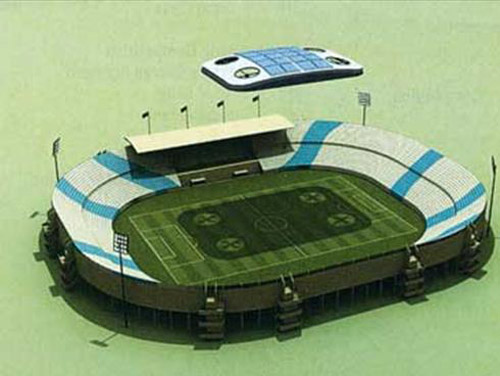
Qatar beat out other world class cities to win the bid for the 2022 World Cup. How did this come to be and what are the cultural ramifications of this success on the region and Qatar’s urban development?
Winning the Bid
To begin to answer this question, let’s trace events back to the FIFA’s decision. You might recall the advert they created for the bid, or Sheikha Mozah Bint Nasser’s speech in 2010 where she emphasizes the impact of football in the Gulf, especially on the youth. She urged FIFA to “beat history” by choosing Qatar over other cities. One of the FIFA committee’s primary concerns was how hot it will be for the athletes to play during the scorching summers. According to the Wall Street Journal, Qatar’s bid promised that $50 billion will be spent on developing infrastructure before the game, and another $4 billion on erecting the architecture and energy costs. They also aim to deliver a carbon-free World Cup.
Energy & Technology
From the energy-technology perspective, the task is to keep the field’s temperature at about 27 degrees Celsius. CNN reported that cooling the stadiums will be driven by solar power:
“Solar thermal collectors and photovoltaic panels on the outside the stadiums and on their roofs will harness energy from the blazing Qatari sun. It will be used to chill water, which in turn will cool air before it is blown through the stadium… photovoltaic panels will export electricity to Qatar’s national grid, which will make the cooling system carbon neutral.”
According to TechCrunch, the solar technology developed will then be re-purposed for other public spaces:
“Each of the five stadiums will harness the power of the suns rays to provide a cool environment for players and fans by converting solar energy into electricity that will then be used to cool both fans and players at the stadiums. When games are not taking place, the solar installations at the stadia will export energy onto the power grid. During matches, the stadia will draw energy from the grid. This is the basis for the stadiums’ carbon-neutrality. Along with the stadiums, we plan to make the cooling technologies we’ve developed available to other countries in hot climates, so that they too can host major sporting events.”
To cap things off, scientists at Qatar University innovated a remote controlled cloud that will provide ample shade for all those in the stadium (shown below). These innovations demonstrate the fundamental role of technology in Qatar’s bid and the resources they are committing to actualizing a carbon-free world cup.

Project Qatar and Urbanization Plans for 2030
Qatar is integrating the speedy development for the world cup with their own infrastructural objectives as a nation. The 8th Annual Construction Exhibition will clarify the depth of this commitment. According to The Peninsula, organizers at the exhibition noted that construction projects for the World Cup are in line with Qatar’s 2030 Vision. Obviously, lofty environmental, economic, social, and goals will not be accomplished without little steps. Fortunately, Qatar is thinking far ahead and seems to be planning in a highly pragmatic fashion.
Qatar’s spirit is framed by Dubai’s own ambitions 10 years ago. The commitment from FIFA demonstrates that thinking ambitiously does lead to great things and that the time has come for dreams to be actualized.
– Plus Aziz







